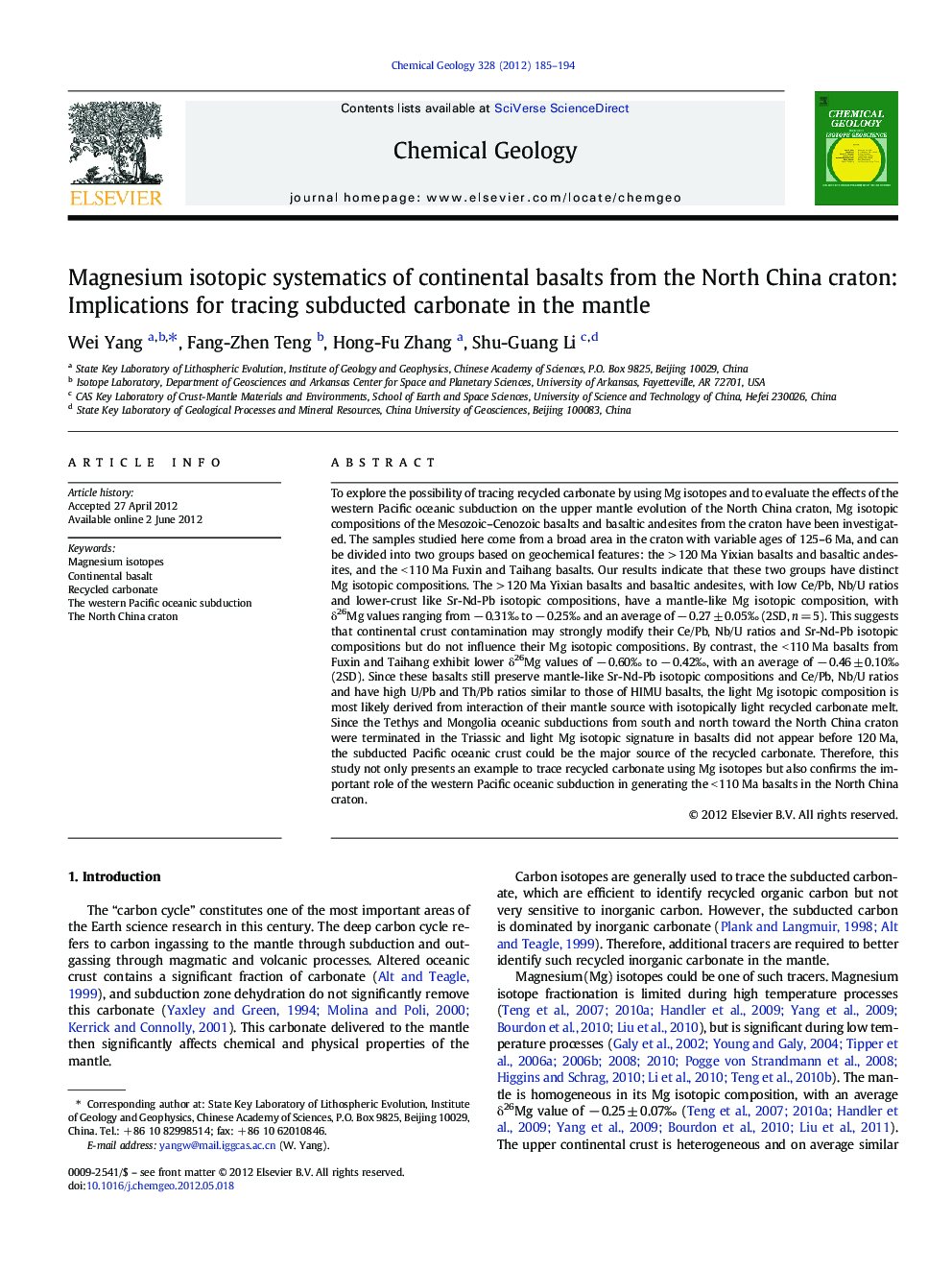| Article ID | Journal | Published Year | Pages | File Type |
|---|---|---|---|---|
| 4699302 | Chemical Geology | 2012 | 10 Pages |
To explore the possibility of tracing recycled carbonate by using Mg isotopes and to evaluate the effects of the western Pacific oceanic subduction on the upper mantle evolution of the North China craton, Mg isotopic compositions of the Mesozoic–Cenozoic basalts and basaltic andesites from the craton have been investigated. The samples studied here come from a broad area in the craton with variable ages of 125–6 Ma, and can be divided into two groups based on geochemical features: the > 120 Ma Yixian basalts and basaltic andesites, and the < 110 Ma Fuxin and Taihang basalts. Our results indicate that these two groups have distinct Mg isotopic compositions. The > 120 Ma Yixian basalts and basaltic andesites, with low Ce/Pb, Nb/U ratios and lower-crust like Sr-Nd-Pb isotopic compositions, have a mantle-like Mg isotopic composition, with δ26Mg values ranging from − 0.31‰ to − 0.25‰ and an average of − 0.27 ± 0.05‰ (2SD, n = 5). This suggests that continental crust contamination may strongly modify their Ce/Pb, Nb/U ratios and Sr-Nd-Pb isotopic compositions but do not influence their Mg isotopic compositions. By contrast, the < 110 Ma basalts from Fuxin and Taihang exhibit lower δ26Mg values of − 0.60‰ to − 0.42‰, with an average of − 0.46 ± 0.10‰ (2SD). Since these basalts still preserve mantle-like Sr-Nd-Pb isotopic compositions and Ce/Pb, Nb/U ratios and have high U/Pb and Th/Pb ratios similar to those of HIMU basalts, the light Mg isotopic composition is most likely derived from interaction of their mantle source with isotopically light recycled carbonate melt. Since the Tethys and Mongolia oceanic subductions from south and north toward the North China craton were terminated in the Triassic and light Mg isotopic signature in basalts did not appear before 120 Ma, the subducted Pacific oceanic crust could be the major source of the recycled carbonate. Therefore, this study not only presents an example to trace recycled carbonate using Mg isotopes but also confirms the important role of the western Pacific oceanic subduction in generating the < 110 Ma basalts in the North China craton.
► Mg isotopic compositions of basalts from the North China craton were measured. ► The > 120 Ma basalts have mantle-like Mg isotopic composition. ► The < 110 Ma basalts are isotopically light. ► Recycled carbonate from Pacific plate was involved to form the < 110 Ma basalts.
